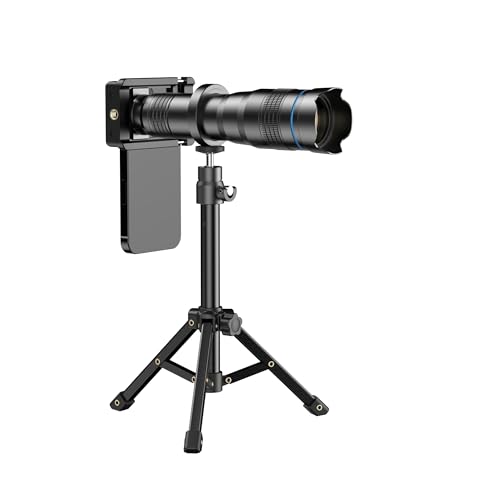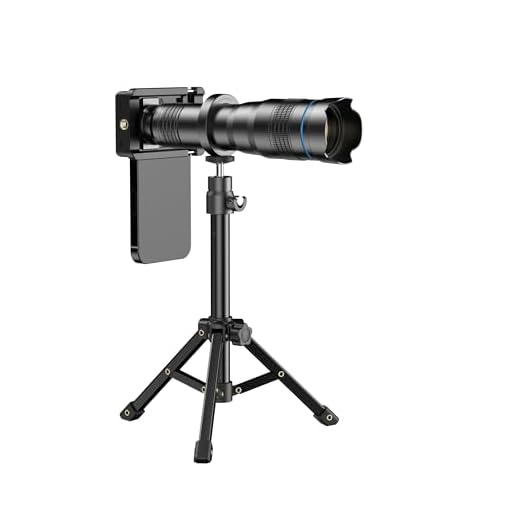


When it comes to smartphones, the camera has become one of the most important features for users. Both iPhone and Samsung are known for their high-quality cameras, but which brand actually has the better camera?
Apple’s iPhone has long been praised for its camera capabilities, with each new model boasting improved image quality, advanced features, and a user-friendly interface. On the other hand, Samsung’s Galaxy series has also gained a reputation for producing stunning photos and videos, rivaling the quality of professional cameras.
So, the question remains: who has the better camera, iPhone or Samsung? Let’s delve into the specifics and compare the camera features of these two tech giants to determine which one comes out on top in the world of smartphone photography.
Comparison of Camera Quality
When comparing the camera quality of iPhones and Samsung phones, it’s important to consider several factors such as resolution, aperture size, sensor technology, and image processing capabilities.
iPhone Cameras
iPhones are known for their high-quality cameras that deliver crisp and vibrant images. Apple often focuses on improving image processing algorithms to enhance color accuracy and dynamic range. The latest iPhone models feature advanced computational photography techniques like Smart HDR, Night mode, and Deep Fusion, which improve low-light performance and detail capture.
Samsung Cameras
Samsung phones, on the other hand, are equipped with high-resolution sensors and versatile camera setups. Samsung devices often feature multiple lenses, including ultra-wide, telephoto, and macro lenses, allowing users to capture a variety of perspectives. Samsung’s camera software emphasizes AI-driven features like scene optimization and portrait mode, enhancing the overall image quality.
| Camera Feature | iPhone | Samsung |
|---|---|---|
| Resolution | Varies by model | Varies by model |
| Aperture Size | Wide aperture for low-light performance | Versatile aperture options |
| Sensor Technology | Advanced sensor technology | High-resolution sensors |
| Image Processing | Advanced computational photography | AI-driven image enhancement |
Resolution and Clarity
When it comes to resolution and clarity, both iPhone and Samsung smartphones offer high-quality camera systems. The iPhone typically boasts a slightly higher resolution in its cameras compared to Samsung devices, providing crisp and detailed images.
However, Samsung smartphones are known for their vibrant colors and excellent dynamic range, which can result in stunning photos and videos with rich hues and deep contrasts.
iPhone Camera:
The iPhone camera excels in capturing fine details and producing sharp images, making it a great choice for photography enthusiasts who value clarity and precision.
Samsung Camera:
The Samsung camera shines in its color reproduction and dynamic range, offering vivid and lifelike images that pop with vibrancy and depth.
Low Light Performance
When it comes to low light performance, both iPhone and Samsung phones have made significant improvements in recent years. However, in general, iPhones tend to perform slightly better in low light conditions compared to Samsung devices.
iPhone:
Apple’s iPhones are known for their impressive low light performance, thanks to their advanced camera sensors and image processing algorithms. The latest iPhone models offer features like Night Mode, which can capture stunning photos even in near darkness.
Samsung:
While Samsung phones also have decent low light performance, they may not be able to match the level of detail and clarity that iPhones offer in challenging lighting conditions. Samsung devices often struggle with noise and graininess in low light photos.
Color Accuracy and Vibrancy
When it comes to color accuracy and vibrancy, both iPhone and Samsung cameras offer impressive results. However, there are some differences in how each brand processes colors.
iPhone: iPhones are known for producing more natural and true-to-life colors. The color accuracy of iPhone cameras is often praised for its consistency across different lighting conditions.
Samsung: Samsung cameras, on the other hand, are known for their vibrant and saturated colors. While some users appreciate the bold and lively colors produced by Samsung cameras, others find them to be slightly oversaturated.
Conclusion:
Ultimately, the choice between iPhone and Samsung cameras in terms of color accuracy and vibrancy comes down to personal preference. If you prefer natural and true-to-life colors, iPhone might be the better option for you. However, if you enjoy vibrant and saturated colors, Samsung cameras could be more appealing.
Technical Specifications
When comparing the cameras on iPhone and Samsung devices, it’s important to consider the technical specifications of each. Here are some key specifications to keep in mind:
- Resolution: Look at the resolution of the cameras on both devices. Higher resolution typically means clearer and more detailed images.
- Aperture: The aperture size affects how much light the camera can capture, which can impact low-light performance.
- Image Stabilization: Optical image stabilization can help reduce blur in photos and videos, especially in low-light conditions.
- Zoom: Consider the zoom capabilities of both devices, including optical zoom for better quality and digital zoom for magnification.
- Features: Check for special features such as portrait mode, night mode, and AI enhancements that can improve the overall quality of your photos.
Aperture Size
When comparing the cameras of iPhone and Samsung smartphones, one crucial factor to consider is the aperture size. The aperture size of a camera lens determines how much light can enter the sensor, affecting the overall image quality. Generally, a larger aperture size (denoted by a smaller f-number) allows more light to enter the sensor, resulting in better low-light performance and more blurred background in portrait shots.
Both iPhone and Samsung smartphones offer various aperture sizes in their camera lenses, with some models featuring wider apertures for improved low-light performance and depth-of-field effects. It’s important to check the aperture size of the specific smartphone model you are interested in to determine its camera capabilities.
Megapixel Count
Both iPhone and Samsung smartphones offer high-resolution cameras with impressive megapixel counts. However, the exact megapixel count varies between models and generations. In general, Samsung devices tend to have higher megapixel counts compared to iPhones.
For example, the latest Samsung flagship smartphones like the Galaxy S20 and Note 20 series boast cameras with up to 108 megapixels, offering incredibly detailed photos. On the other hand, iPhones like the iPhone 11 Pro Max have cameras with 12 megapixels, but Apple’s image processing software ensures excellent image quality and colors.
Image Processing Algorithms
Both iPhone and Samsung smartphones come equipped with advanced image processing algorithms that enhance the quality of photos captured by their cameras. These algorithms play a crucial role in improving color accuracy, dynamic range, sharpness, and overall image quality.
Apple’s iPhones are known for their powerful image processing capabilities, which are optimized to deliver vibrant and true-to-life colors in photos. The Smart HDR technology in iPhones intelligently combines multiple exposures to create a single high-quality image with enhanced details and reduced noise.
On the other hand, Samsung smartphones use advanced image processing algorithms like Scene Optimizer and Super Resolution to enhance the overall quality of photos. The Scene Optimizer feature automatically adjusts camera settings based on the scene being captured, ensuring optimal color balance and exposure levels.
Overall, both iPhone and Samsung smartphones leverage sophisticated image processing algorithms to deliver impressive results, making them top choices for photography enthusiasts.
User Experience
When it comes to user experience, both iPhone and Samsung offer intuitive interfaces and smooth operation. However, iPhone is known for its seamless integration between hardware and software, providing a cohesive and user-friendly experience. The camera app on iPhones is simple to use and offers a range of features that make capturing high-quality photos a breeze.
iPhone Camera Experience
The camera on iPhones is known for its ease of use and exceptional image quality. The interface is clean and straightforward, allowing users to quickly access different shooting modes and settings. The advanced image processing algorithms ensure that photos taken with an iPhone look vibrant and detailed.
Samsung Camera Experience
Samsung cameras also offer a great user experience with a range of shooting modes and settings to choose from. Samsung devices often come with additional camera features like Pro mode, Super Slow-mo, and AR emojis, giving users more creative options. The camera app interface is customizable, allowing users to arrange shortcuts for easy access to their favorite features.
Camera Interface
Both iPhone and Samsung devices offer intuitive and user-friendly camera interfaces. iPhone’s camera app is known for its simplicity and ease of use, with easy access to basic settings and shooting modes. Samsung’s camera interface, on the other hand, is more feature-rich, offering a wide range of manual controls and advanced settings for users who want to fine-tune their photography experience.
iPhone Camera Interface
The iPhone camera interface is clean and minimalist, with a focus on providing a seamless shooting experience. Users can easily switch between different shooting modes, adjust exposure and focus, and apply filters with just a few taps. The intuitive design makes it easy for beginners to capture great photos without getting overwhelmed by too many options.
Samsung Camera Interface
Samsung’s camera interface is more robust, catering to users who want more control over their photography. The Pro mode allows users to adjust settings like ISO, shutter speed, and white balance manually, giving them the flexibility to experiment with different shooting styles. Samsung also offers a variety of shooting modes and effects to enhance creativity and capture unique images.





